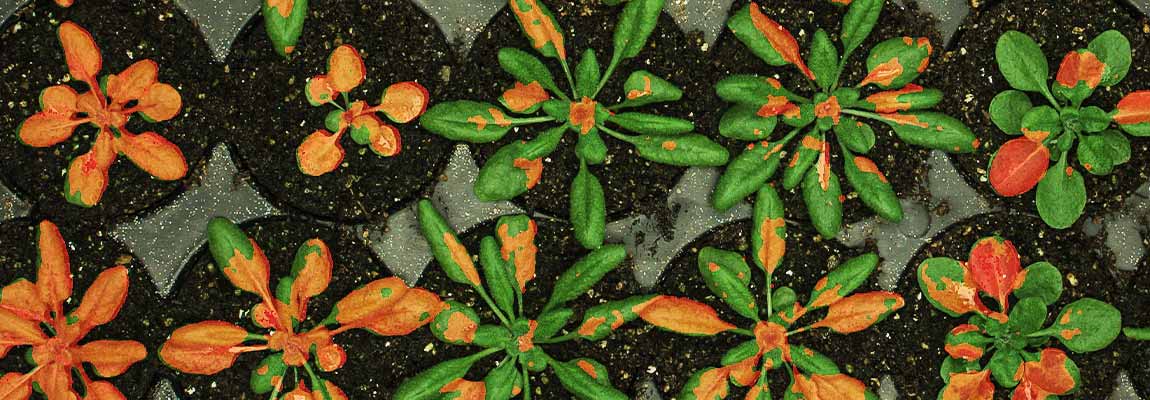
Bioluminescence
Luminescence can serve as genetic reporter. It can not only label gene products or metabolites, but it can serve to visualize plant-microbe interactions. Researchers at the University of Amsterdam used luminescence labelled Xanthomonas campestris that infect Arabidopsis thaliana plants. The luminescence helps to follow the microbes’ localization on and in the plant’s leaves and thereby serves to analyze the disease progression as well as the plant’s resistance functions. Imaging the luminescence together with plant sizes and surface colors with the LemnaTec PhenoAIxpert ES it is possible to follow time series of pathogen development and disease symptom occurrence in live plants. The combined phenotyping using luminescence and visible light not only provides better understanding of the plant microbe-interactions, but it enables improved screening of resistant individuals in plant populations. Luminescence (color-coded in magenta) indicates the presence of live bacteria, the visible light RGB image shows the plants and enables mapping of disease symptoms, e.g., yellowed areas in the leaves.

Images kindly provided by University of Amsterdam, Swammerdam Institute of Life Sciences.
